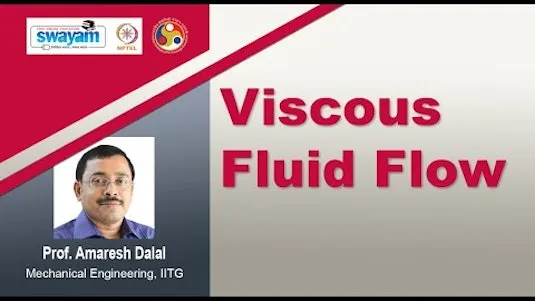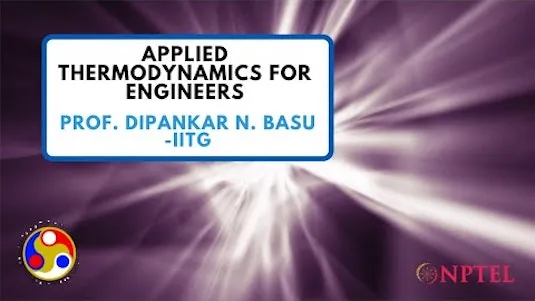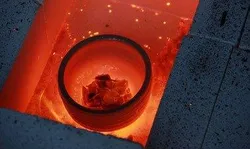
Metamorphic Petrology & Thermodynamics 
This course provides a basic to advanced introduction to metamorphic petrology and thermodynamics for postgraduate students. It covers topics such as the processes behind metamorphism, the description and classification of metamorphic rocks, and how to extract information from them. It also covers mineralogy, rock types, petrogenetic grids, thermodynamics, and petrographic details of important metamorphic rocks. ▼
ADVERTISEMENT
Course Feature
![]() Cost:
Cost:
Free
![]() Provider:
Provider:
Swayam
![]() Certificate:
Certificate:
Paid Certification
![]() Language:
Language:
English
![]() Start Date:
Start Date:
9th Jan, 2022
Course Overview
❗The content presented here is sourced directly from Swayam platform. For comprehensive course details, including enrollment information, simply click on the 'Go to class' link on our website.
Updated in [March 20th, 2023]
This course, Metamorphic Petrology & Thermodynamics, is a basic to advanced introduction for post graduate students in petrology. It covers topics such as the processes behind metamorphism, the description and classification of metamorphic rocks, and how to extract information from metamorphic rocks and minerals to determine the conditions under which they formed. The course also covers topics such as the structure and classification of silicate minerals, the factors controlling metamorphism, regional metamorphism and paired metamorphic belts, mineralogical phase rule, metamorphic reactions, metamorphic facies and facies series, ultrahigh temperature and ultrahigh pressure metamorphism, isograde and reaction isograde, and petrographic details of important metamorphic rocks. The course includes video, text, assignments, quizzes, case studies, and references. It is designed to provide students with a better understanding of the processes and principles involved during the origin and evolution of metamorphic rocks.
[Applications]
Upon completion of this course, students should be able to apply the knowledge they have gained to interpret the origin and evolution of metamorphic rocks. They should be able to identify and classify metamorphic rocks, and use petrographic and thermodynamic data to determine the pressure, temperature, and stress conditions under which the rocks formed. Additionally, students should be able to use graphical representations of metamorphic mineral assemblages to interpret the metamorphic history of a rock.
[Career Paths]
1. Geologist: Geologists study the physical structure and composition of the Earth, including its rocks, minerals, and other materials. They use their knowledge to identify and assess potential sources of energy, minerals, and other natural resources. They also study the effects of natural disasters, such as earthquakes and floods, and advise on how to mitigate their effects. Geologists are employed by government agencies, universities, and private companies.
2. Geophysicist: Geophysicists use physical principles to study the Earth's interior and its atmosphere. They use seismic, magnetic, and gravity data to map the Earth's structure and composition. They also study the Earth's magnetic and gravitational fields, and use this information to identify potential sources of energy and minerals. Geophysicists are employed by government agencies, universities, and private companies.
3. Petroleum Geologist: Petroleum geologists study the structure and composition of the Earth's subsurface to identify and assess potential sources of oil and gas. They use seismic, magnetic, and gravity data to map the subsurface and identify potential reservoirs of oil and gas. Petroleum geologists are employed by oil and gas companies.
4. Environmental Geologist: Environmental geologists study the effects of human activities on the environment. They use their knowledge of geology to identify and assess potential sources of pollution, and advise on how to mitigate their effects. Environmental geologists are employed by government agencies, universities, and private companies.
Developing Trends:
1. Geologists are increasingly using advanced technologies such as remote sensing, geographic information systems (GIS), and 3D modeling to study the Earth's surface and subsurface.
2. Geophysicists are using advanced technologies such as satellite imagery and artificial intelligence (AI) to study the Earth's atmosphere and interior.
3. Petroleum geologists are using advanced technologies such as 3D seismic imaging and AI to identify and assess potential sources of oil and gas.
4. Environmental geologists are using advanced technologies such as GIS and remote sensing to identify and assess potential sources of pollution.
[Education Paths]
1. Bachelor of Science in Geology: This degree program provides students with a comprehensive understanding of the Earth's physical structure, its history, and its processes. Students learn about the Earth's composition, its structure, and its evolution. They also learn about the physical and chemical processes that shape the Earth's surface and its interior. This degree program also covers topics such as mineralogy, petrology, geochemistry, geophysics, and geomorphology. Graduates of this program are prepared to pursue careers in the geosciences, such as geology, geophysics, and geochemistry.
2. Master of Science in Geology: This degree program provides students with a more in-depth understanding of the Earth's physical structure, its history, and its processes. Students learn about the Earth's composition, its structure, and its evolution. They also learn about the physical and chemical processes that shape the Earth's surface and its interior. This degree program also covers topics such as mineralogy, petrology, geochemistry, geophysics, and geomorphology. Graduates of this program are prepared to pursue careers in the geosciences, such as geology, geophysics, and geochemistry.
3. Doctor of Philosophy in Geology: This degree program provides students with an advanced understanding of the Earth's physical structure, its history, and its processes. Students learn about the Earth's composition, its structure, and its evolution. They also learn about the physical and chemical processes that shape the Earth's surface and its interior. This degree program also covers topics such as mineralogy, petrology, geochemistry, geophysics, and geomorphology. Graduates of this program are prepared to pursue careers in the geosciences, such as geology, geophysics, and geochemistry.
4. Master of Science in Metamorphic Petrology and Thermodynamics: This degree program provides students with an in-depth understanding of the processes and principles involved in the formation of metamorphic rocks. Students learn about the Earth's composition, its structure, and its evolution. They also learn about the physical and chemical processes that shape the Earth's surface and its interior. This degree program also covers topics such as mineralogy, petrology, geochemistry, geophysics, and geomorphology. Graduates of this program are prepared to pursue careers in the geosciences, such as geology, geophysics, and geochemistry.
The development trends in the field of metamorphic petrology and thermodynamics are focused on understanding the processes and principles involved in the formation of metamorphic rocks. This includes research into the physical and chemical processes that shape the Earth's surface and its interior, as well as the mineralogy, petrology, geochemistry, geophysics, and geomorphology of metamorphic rocks. Additionally, research into the application of metamorphic petrology and thermodynamics to other fields, such as geothermal energy, is becoming increasingly important.
Course Provider

Provider Swayam's Stats at AZClass
Metamorphic Petrology & Thermodynamics provides graduate students with a basic to advanced introduction to metamorphic petrology and thermodynamics. It covers topics such as the processes behind metamorphism, the description and classification of metamorphic rocks, and how information can be extracted from them. It also covers mineralogy, rock types, lithogenetic grids, thermodynamics and lithofacial details of important metamorphic rocks. Metamorphic Rocks and Thermodynamics is a course that introduces graduate students to metamorphic rocks and the processes of their formation. Learners can learn about the mineralogy, shape, and composition of metamorphic rocks and how they can be used to determine the conditions under which metamorphic rocks was formed.
Discussion and Reviews
0.0 (Based on 0 reviews)
Explore Similar Online Courses

Ecology And Environment

Perspectives On Neurolinguistic

Python for Informatics: Exploring Information

Social Network Analysis

Introduction to Systematic Review and Meta-Analysis

The Analytics Edge

DCO042 - Python For Informatics

Causal Diagrams: Draw Your Assumptions Before Your Conclusions

Whole genome sequencing of bacterial genomes - tools and applications

Viscous Fluid Flow

Applied Thermodynamics For Engineers


Start your review of Metamorphic Petrology & Thermodynamics